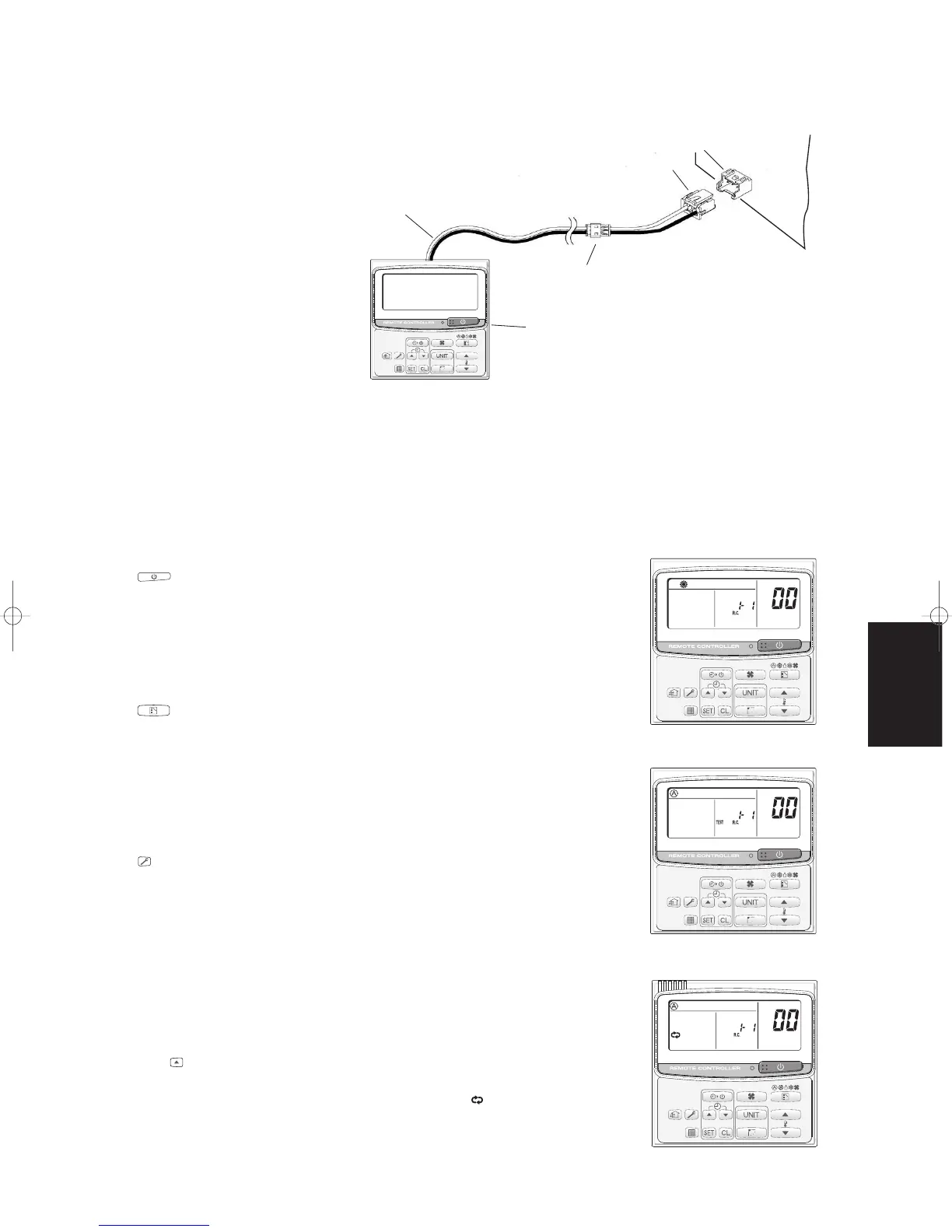5-3. Normal Display Operations and Functions
■ Normal display functions
• Connect the special service checker wiring to the outdoor unit PCB.
The connection is shown in the figure below.
* It is not necessary to disconnect the communications line in the inter-unit control wiring if it has already been connected at
this time.
* Settings modes 1 and 2 can be used even when the outdoor unit is independent (when 1 maintenance remote controller is
connected to 1 outdoor unit and automatic address setting for the indoor units has not been completed).
* Displays the overall system status for that refrigerant system.
● All units start/stop (Fig. 1)
<Operation>
The button can be used to start and stop all the indoor units.
• The LED turns ON when 1 or more indoor units is operating.
• The LED blinks when an alarm has occurred at 1 or more indoor
units during operation.
● Switching between cooling/heating (Fig. 1)
<Operation>
The button switches between heating and cooling modes.
• The specifications are equivalent to the heating/cooling input that
was present on earlier outdoor unit PCBs.
• The display shows the operating mode of the indoor unit with the
lowest number.
● All units test run (Fig. 2)
<Operation>
The button switches test run ON/OFF for all indoor units.
• Press and hold for 4 seconds to turn ON.
“Test run” is displayed while the test run is in progress.
• Conditions of test runs that are started from the unit remote con-
troller are not displayed on the outdoor unit maintenance remote
controller.
● High-speed operation (Fig. 3)
• Do not use with actual units. (The devices may be damaged.)
<Operation>
The time button changes between high-speed operation and
normal operation.
• During high-speed operation, the “repeat” timer mark is dis-
played.
Fig. 1
Fig. 2
Fig. 3

